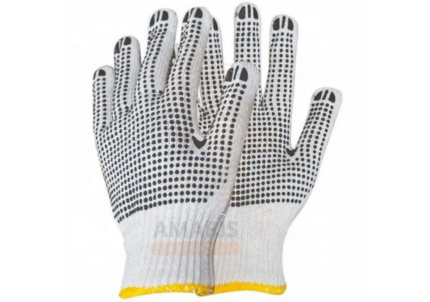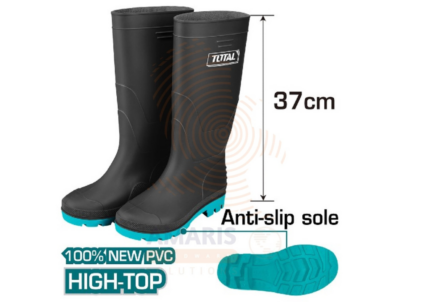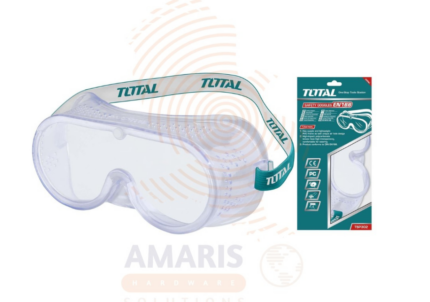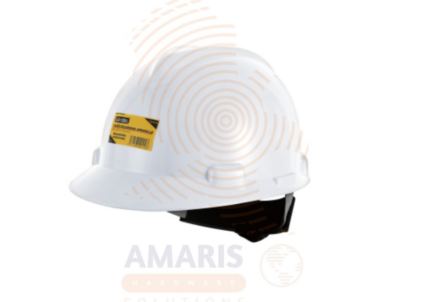Knitted & Pvc Dots Gloves
WhatsApp Order
- Knitted Gloves: Knitted gloves refer to hand coverings that are crafted through the process of knitting, a method of creating fabric by interlocking loops of yarn. These gloves are typically made from various types of yarn, such as cotton, wool, or synthetic fibers. Knitted gloves are known for their flexibility, comfort, and breathability, making them suitable for a wide range of activities and environments. They come in different styles, thicknesses, and designs to cater to various purposes, from lightweight and dexterous gloves for delicate tasks to heavier and insulated options for colder conditions.
- PVC Dots Gloves: PVC dots gloves are a type of work glove that features small raised dots or patterns made from polyvinyl chloride (PVC) on the palm or fingers. These dots enhance the grip and abrasion resistance of the gloves, providing better control and preventing slips when handling objects. The base material of PVC dots gloves can vary and may include fabrics like cotton, polyester, or a blend of materials. These gloves are commonly used in tasks where a secure grip is essential, such as in construction, manufacturing, or general labor. The PVC dots enhance the overall functionality of the gloves without sacrificing flexibility.
Description
Knitted Gloves:
- General Work Protection: Knitted gloves are commonly used for general hand protection in a variety of work environments. They provide a layer of defense against abrasions, scratches, and minor cuts.
- Material Handling: Due to their flexibility and dexterity, knitted gloves are suitable for tasks that involve handling materials, whether it’s in warehouses, construction sites, or manufacturing facilities.
- Construction and Carpentry: Construction workers and carpenters often use knitted gloves for various tasks, including handling tools, carrying materials, and protecting hands from rough surfaces.
- Assembly Line Work: In assembly line settings, where precision and tactile sensitivity are important, workers may wear knitted gloves to maintain a good grip while handling small components.
- Gardening and Landscaping: Lightweight knitted gloves are popular for gardening and landscaping activities, providing protection against thorns, blisters, and dirt while allowing for easy hand movements.
- Cold Weather Protection: In colder climates, knitted gloves made from insulating materials like wool or acrylic are used to keep hands warm while performing various outdoor tasks.
PVC Dots Gloves:
- Grip-Intensive Tasks: PVC dots gloves are designed for tasks that require a strong and secure grip. The PVC dots on the palm or fingers enhance friction, reducing the likelihood of dropping objects.
- Warehousing and Logistics: Workers involved in warehousing and logistics benefit from PVC dots gloves when handling packages, ensuring a secure grip while loading and unloading materials.
- Construction and Roofing: Construction workers, especially those involved in roofing, find PVC dots gloves useful for handling materials on inclined surfaces, providing a better grip on tools and roofing materials.
- Manufacturing and Assembly: In manufacturing settings, where precision is crucial, PVC dots gloves are used for tasks involving the manipulation of small parts or assembling components.
- Glass and Metal Handling: Industries working with glass or metal often use PVC dots gloves to prevent slippage when handling smooth or slippery surfaces, reducing the risk of accidents.
- Carpentry and Woodworking: Carpenters and woodworkers may use PVC dots gloves for tasks that involve handling lumber, ensuring a secure grip on tools and preventing slipping while working with wood.
- Maintenance and Repair Work: Maintenance professionals and repair technicians use PVC dots gloves when working on equipment or machinery, ensuring a reliable grip for tasks requiring precision and control.
SAFETY HANDLING PRECAUTIONS
For Knitted Gloves:
- Select the Right Type for the Task: Choose knitted gloves appropriate for the specific job. Different materials and thicknesses are suitable for various tasks, so ensure that the gloves provide the necessary protection.
- Inspect Gloves Regularly: Before each use, inspect knitted gloves for any signs of wear, tear, or damage. Replace gloves that have holes, frays, or weakened areas to maintain their protective integrity.
- Avoid Using Damaged Gloves: Do not use knitted gloves that are damaged or have been previously repaired. Damaged gloves may not provide adequate protection and can increase the risk of injuries.
- Size Matters: Use gloves that fit properly. Ill-fitting gloves can reduce dexterity and increase the risk of accidents. Ensure that the gloves are snug but not too tight.
- Consider Task-Specific Gloves: Use specialized knitted gloves for tasks that require additional protection, such as cut-resistant gloves for handling sharp objects or gloves with enhanced grip for certain applications.
- Limit Exposure to Hazardous Substances: If working with chemicals or hazardous substances, ensure that the knitted gloves are compatible with the specific materials to avoid chemical exposure.
For PVC Dots Gloves:
Safety precautions to observe when using knitted and PVC Dots Gloves
- Check for Wear and Tear: Inspect PVC dots gloves for any signs of wear, particularly on the dots. Worn-out dots may reduce grip effectiveness, and the gloves should be replaced if damaged.
- Choose the Right Dot Pattern: Different PVC dot patterns are available. Choose the pattern that suits the specific requirements of your task, whether it's for a more comprehensive grip or more precise handling.
- Avoid Solvent Exposure: PVC dots may be affected by certain solvents. Avoid using PVC dots gloves when working with substances that may degrade or dissolve the PVC material.
- Be Mindful of Temperature: PVC dots gloves may not be suitable for extreme temperatures. If working in very hot or cold conditions, choose gloves that provide adequate insulation or ventilation.
- Replace Worn-out Gloves: Just like with knitted gloves, replace PVC dots gloves when they become worn or damaged. This ensures that the gloves continue to provide the necessary protection.
- Training and Awareness: Provide training to workers on the appropriate use and limitations of PVC dots gloves. Workers should be aware of the specific applications for which these gloves are designed.
- Maintain Cleanliness: Keep gloves clean and free from contaminants. Dirty or greasy gloves may compromise the grip, leading to an increased risk of accidents.
Related products
Cut Resistant Gloves
Cut-resistant gloves are specialized protective garments designed to minimize the risk of injury from sharp objects, such as knives, glass, or sharp tools. These gloves are constructed using materials that possess high levels of cut resistance, often incorporating advanced fibers like Kevlar, Dynnema, or other similar materials. The primary purpose of cut-resistant gloves is to provide a barrier that reduces the likelihood of cuts, lacerations, or abrasions to the wearer's hands while handling potentially hazardous objects or performing tasks that involve sharp edges. These gloves are widely used in various industries, including manufacturing, construction, food handling, and healthcare, where the risk of cuts and injuries is prevalent.
Face Mask
PRODUCT DESCRIPTION
A face mask is a protective covering that is worn over the nose and mouth to help reduce the transmission of respiratory droplets, providing a barrier against the spread of infectious agents such as viruses and bacteria. It serves as a preventive measure in various settings, including healthcare, public spaces, and during pandemics, to help limit the potential transmission of respiratory infections from person to person. Face masks are designed to filter or block respiratory droplets that may contain pathogens, thereby contributing to the overall efforts to maintain public health and safety.
Insulated Heavy-Duty Diagonal Cutting Pliers
Insulated Heavy-Duty Diagonal Cutting Pliers refer to a specialized hand tool designed for cutting wires, cables, and other materials in electrical applications. The term "insulated" indicates that the tool is equipped with insulating materials on its handles, providing protection against electric shock. "Heavy-duty" implies that the pliers are robust and capable of handling tough cutting tasks, while "diagonal cutting" specifies the angled shape of the cutting edges, allowing for precise and efficient cutting in confined spaces. These pliers are commonly used by electricians and professionals working with electrical components to ensure safety and reliability in their tasks.
Polyester Knit Glove
A polyester knit glove is a type of protective hand wear crafted from polyester fibers using a knitting process. These gloves are characterized by their lightweight, flexible, and breathable nature, making them suitable for a wide range of applications. The knit construction allows for a snug fit and dexterity, while the polyester material provides resistance to abrasions, dirt, and minor cuts. Polyester knit gloves find common use in various industries such as manufacturing, assembly, electronics, food handling, and general-purpose tasks where a balance of hand protection and tactile sensitivity is required.
Rain Boots
Rain boots, also known as Wellington boots or rubber boots, are waterproof footwear designed to protect the feet and lower legs from water and moisture. Typically made of rubber or other waterproof materials, these boots feature a high shaft that extends above the ankle to keep the wearer's feet dry in wet and rainy conditions. The design often includes a slip-on style with a sturdy sole for traction, making them practical for walking through puddles, mud, and other wet environments. Rain boots are commonly worn for outdoor activities during inclement weather to ensure comfort and protection against water.
Safety Goggles (PVC)
Safety Goggles (PVC) are protective eyewear designed to shield the eyes from potential hazards in various environments, such as industrial workplaces, laboratories, or construction sites. These goggles typically feature impact-resistant lenses and a form-fitting frame to provide a barrier against flying debris, liquids, chemicals, or other materials that could cause harm to the eyes. The primary purpose of safety goggles is to enhance eye safety and prevent injuries by creating a physical barrier between the eyes and potential dangers, ensuring a higher level of occupational or recreational safety.
Safety Helmet (White)
A Safety Helmet (White), commonly referred to as a hard hat, is a head protection device designed to safeguard individuals from head injuries in various industrial, construction, or other occupational settings. The helmet typically consists of a hard outer shell made of impact-resistant materials, such as high-density polyethylene or fiberglass, and an inner suspension system that helps absorb and distribute impact energy. The white color of the safety helmet may serve functional or visibility purposes, such as enhancing the wearer's visibility in low-light conditions or indicating a specific role or status on a work site. The primary goal of a safety helmet is to provide protection against falling objects, impact, and electrical hazards, promoting the overall safety of individuals in hazardous work environments.
Welding Glass
A welding glass, also known as a welding lens or welding filter, is a specialized protective eyewear designed for use by welders to shield their eyes from intense light and harmful radiation produced during welding processes. Typically made of a tinted or shaded glass, welding glasses filter out ultraviolet (UV) and infrared (IR) radiation, as well as visible light, to provide adequate protection for the welder's eyes. The level of shading in welding glass is specified by a shade number, with higher numbers indicating greater protection against intense light. Welding glasses are a crucial safety measure to prevent eye injuries and conditions such as arc eye or welder's flash, which can result from exposure to the intense light generated during welding.


 Acrylic Sealants
Acrylic Sealants Construction Adhesives
Construction Adhesives Double-Sided Tape
Double-Sided Tape Duct Tape
Duct Tape Electrical Tape
Electrical Tape Epoxy & Resins
Epoxy & Resins Masking Tape
Masking Tape
 Automotive Wrenches & Socket Sets
Automotive Wrenches & Socket Sets Battery Chargers & Jump Starters
Battery Chargers & Jump Starters Car Jacks & Stands
Car Jacks & Stands Car Wash & Detailing Products
Car Wash & Detailing Products Diagnostic Tools
Diagnostic Tools Tire Inflators
Tire Inflators Vehicle Lighting
Vehicle Lighting Oil & Lubricants
Oil & Lubricants
 Adhesives & Sealants
Adhesives & Sealants Bricks & Blocks
Bricks & Blocks Cement & Concrete
Cement & Concrete Drywall & Plaster
Drywall & Plaster Flooring (Tiles, Wood, Laminate)
Flooring (Tiles, Wood, Laminate) Lumber & Plywood
Lumber & Plywood Paints, Primers & Coatings
Paints, Primers & Coatings Insulation Materials
Insulation Materials Roofing Materials
Roofing Materials
 Circuit Breakers
Circuit Breakers Electrical Cables & Wires
Electrical Cables & Wires Switches & Sockets
Switches & Sockets Fuses & Relays
Fuses & Relays Connectors & Terminals
Connectors & Terminals Electrical Boxes & Panels
Electrical Boxes & Panels Conduit & Fittings
Conduit & Fittings Lighting Fixtures & Bulbs
Lighting Fixtures & Bulbs Extension Cords & Power Strips
Extension Cords & Power Strips
 Anchors
Anchors Bolts
Bolts Clips & Clamps
Clips & Clamps Screws
Screws Nuts
Nuts Washers
Washers Rivets
Rivets Nails
Nails Threaded Rods
Threaded Rods
 Hammers
Hammers Measuring Tools (Tapes, Levels, Calipers)
Measuring Tools (Tapes, Levels, Calipers) Screwdrivers
Screwdrivers Pliers & Cutters
Pliers & Cutters Saws & Blades
Saws & Blades Chisels & Punches
Chisels & Punches Allen Keys & Hex Keys
Allen Keys & Hex Keys Ratchets & Socket Sets
Ratchets & Socket Sets Wrenches & Spanners
Wrenches & Spanners
 Power Tool Accessories (Blades, Bits, Discs)
Power Tool Accessories (Blades, Bits, Discs) Rotary Tools
Rotary Tools Saws (Circular, Jigsaw, Reciprocating)
Saws (Circular, Jigsaw, Reciprocating) Drills & Drivers
Drills & Drivers Grinders & Sanders
Grinders & Sanders Heat Guns
Heat Guns Nail Guns
Nail Guns Impact Wrenches
Impact Wrenches Batteries & Chargers
Batteries & Chargers
 Pipes & Fittings (PVC, Copper, PEX)
Pipes & Fittings (PVC, Copper, PEX) Plumbing Tools
Plumbing Tools Pumps & Motors
Pumps & Motors Sealants & Adhesives for Plumbing
Sealants & Adhesives for Plumbing Valves & Taps
Valves & Taps Water Heaters
Water Heaters Drainage Systems
Drainage Systems Faucets & Fixtures
Faucets & Fixtures Hoses & Tubing
Hoses & Tubing
 Hinges & Latches
Hinges & Latches Hooks & Brackets
Hooks & Brackets Window Hardware
Window Hardware Chains & Cables
Chains & Cables Casters & Wheels
Casters & Wheels Shelving & Storage Systems
Shelving & Storage Systems Door Handles & Locks
Door Handles & Locks Drawer Slides & Cabinet Hardware
Drawer Slides & Cabinet Hardware
 Personal Protective Equipment (PPE)
Personal Protective Equipment (PPE) Respirators & Masks
Respirators & Masks Safety Glasses
Safety Glasses Safes
Safes Security Cameras
Security Cameras Gloves
Gloves Helmets
Helmets Ear Protection
Ear Protection Fire Safety Equipment
Fire Safety Equipment Locks & Padlocks
Locks & Padlocks Motion Sensors & Alarms
Motion Sensors & Alarms
 Garden Fencing
Garden Fencing Garden Furniture Hardware
Garden Furniture Hardware Lawn Mowers
Lawn Mowers Trimmers & Edgers
Trimmers & Edgers Shovels & Spades
Shovels & Spades Rakes & Hoes
Rakes & Hoes Pruning Shears & Loppers
Pruning Shears & Loppers Watering Systems (Hoses, Sprinklers, Nozzles)
Watering Systems (Hoses, Sprinklers, Nozzles)
 Interior Paints
Interior Paints Paint Brushes & Rollers
Paint Brushes & Rollers Paint Strippers & Thinners
Paint Strippers & Thinners Paint Trays & Accessories
Paint Trays & Accessories Exterior Paints
Exterior Paints Spray Paints
Spray Paints Primers & Undercoats
Primers & Undercoats Varnishes & Stains
Varnishes & Stains
 Gaskets & Seals
Gaskets & Seals Hydraulic Fittings
Hydraulic Fittings Industrial Fasteners
Industrial Fasteners Industrial Hoses
Industrial Hoses Lubricants & Greases
Lubricants & Greases Metal Sheets & Bars
Metal Sheets & Bars Bearings & Bushings
Bearings & Bushings Belts & Pulleys
Belts & Pulleys
 HVAC Filters
HVAC Filters Insulation for HVAC
Insulation for HVAC Air Conditioners
Air Conditioners Refrigerants
Refrigerants Ventilation Ducts & Fittings
Ventilation Ducts & Fittings Thermostats & Controllers
Thermostats & Controllers Fans & Blowers
Fans & Blowers
 Pegboards & Hooks
Pegboards & Hooks Shelving Units
Shelving Units Storage Bins & Containers
Storage Bins & Containers Toolboxes & Tool Chests
Toolboxes & Tool Chests Workbenches
Workbenches Drawer Organizers
Drawer Organizers Labeling Supplies
Labeling Supplies
 Welding Accessories (Clamps, Brushes)
Welding Accessories (Clamps, Brushes) Welding Electrodes & Rods
Welding Electrodes & Rods Welding Helmets & Gloves
Welding Helmets & Gloves Welding Machines
Welding Machines Soldering Irons & Stations
Soldering Irons & Stations Flux & Solder Wire
Flux & Solder Wire
 Generator Accessories
Generator Accessories Inverters
Inverters Portable Generators
Portable Generators Power Inverters
Power Inverters Transfer Switches
Transfer Switches Diesel & Gasoline Generators
Diesel & Gasoline Generators
 Transport Equipment: Carts, Dollies, and Hand Trucks
Transport Equipment: Carts, Dollies, and Hand Trucks Storage Solutions: Pallets, Racks, and Containers
Storage Solutions: Pallets, Racks, and Containers Lifting Equipment: Hoists, Cranes, and Jacks
Lifting Equipment: Hoists, Cranes, and Jacks Conveyors and Accessories: Belts and Rollers
Conveyors and Accessories: Belts and Rollers








